 |
 |
 |
| |
High HCV Viral Load Is Associated with an Increased Risk for Mortality in HIV/HCV-co-infected Individuals
|
| |
| |
Reported by Jules Levin
CROI 2009 Feb 8-12 Montreal
Jurgen Rockstroh*1, L Peters2, V Soriano3, P Reiss4, A D'arminio Monforte5, M Beniowski6, M Losso7, O Kirk2, B Kupfer1, A Mocroft8, and EuroSIDA Study Group
1Univ of Bonn, Germany; 2Copenhagen HIV Prgm, Hvidovre, Denmark; 3Hosp Carlos III, Madrid, Spain; 4Univ of Amsterdam, The Netherlands; 5San Paolo Hosp, Milan, Italy; 6Szpital Specjalistyczny, Chorzow, Poland; 7Hosp Ramos Mejia, Buenos Aires, Argentina; and 8Royal Free and Univ Coll Med Sch, London, UK
Doubts were raised about the findings of this study at the microphone after the oral presentation by Jurgen Rockstroh since in monoinfection viral load has never been found to be associated with HCV disease progression. Rockstruh said in response to questions after his talk: there are higher viral loads and progression is faster in HIV, as well there are more events in HIV+ individuals compared to monoinfection because progression is faster in coinfection, and these reasons contribute to perhaps explaining this previously unforeseen finding in HCV monoinfection. (From Jules: I think Rockstruh's finding and his explanation as to why is plausible to me. I was always surprised by the literature that never found viral load associated with HCV progression) I think he said that he saw the same results in patients who did not receive peg/RBV treatment but only 1% were treated anyway. There were numerous adjustments but no adjustments were made for fibrosis or fibrosis markers. Rockstruh was asked about adjusting for alcohol use: adjustment for alcohol use was not made as it is difficult because it is hard to have this background on patients in such a study like this, but alcohol can have an affect. I recall Rockstruh saying they plan to conduct an analysis adjusting for noninvasive fibrosis markers.
ABSTRACT:
Background: The influence of hepatitis C virus (HCV) RNA level and HCV genotype on HIV or HCV disease progression is still unknown. These factors were investigated in HIV/HCV-co-infected individuals from the EuroSIDA cohort
Methods: Serum HCV RNA level and HCV genotyping was determined in all HCV antibody-positive samples from the EuroSIDA cohort. Poisson regression analyses were used to investigate progression to death from any cause or from liver-related disease and compared between HCV-viremic (low <500,000 IU/mL and high ≥500,000 IU/mL) and aviremic patients (HCV RNA <615 IU/ml) and comparing genotypes 1-4. Models were adjusted for data source (analysis from central sample repository or data from clinical site), gender, HIV-transmission category, region of Europe, HBV-co-infection, race, prior AIDS diagnosis, age, CD4 at genotype testing, date recruited to EuroSIDA, type of ART, and date of HCV genotype testing.
Results: HCV viral load was determined in 1952 HIV/HCV antibody-positive subjects. 1537 patients (78.7%) showed detectable HCV RNA >615 IU/mL; of these, 821 (53.1%) had an HCV RNA ≥500,000 IU/mL. Incidence rates (per 100 person-years of follow-up) and adjusted incidence rate ratios for death and liver-related death are shown in the table. Compared to patients with low HCV RNA, viremic patients had a similar incidence of death and liver-related death while patients with high HCV RNA had a significantly increased incidence of death and liver-related death after adjustment (see slides below). Of the 1537 HCV RNA-positive patients, 800 (52.0%), 53 (3.4%), 466 (30.3%), and 218 (14.2%) were genotypes 1-4, respectively. The figure shows the adjusted IRR for death and liver-related death. After adjustment, genotypes 2 and 3 had a lower incidence of death, statistically significant for genotype 3. A similar pattern was seen for liver-related death, although it did not reach statistical significance, possibly due to limited power.
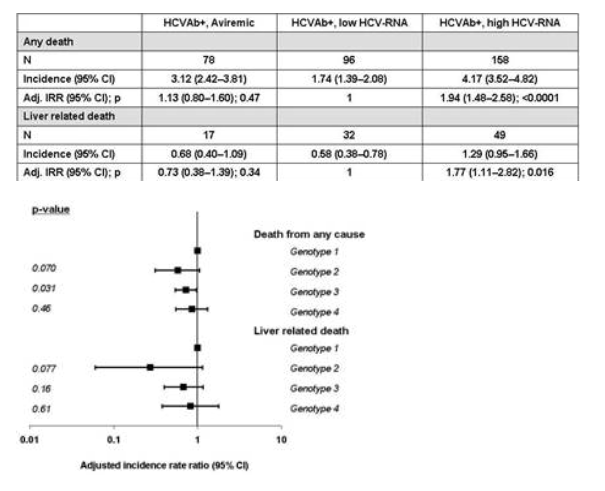
Conclusions: HIV/HCV-co-infected patients with high HCV viremia had an increased incidence of liver-related death. Moreover, HCV genotype 2 and 3 were associated with decreased overall-death and liver-related deaths
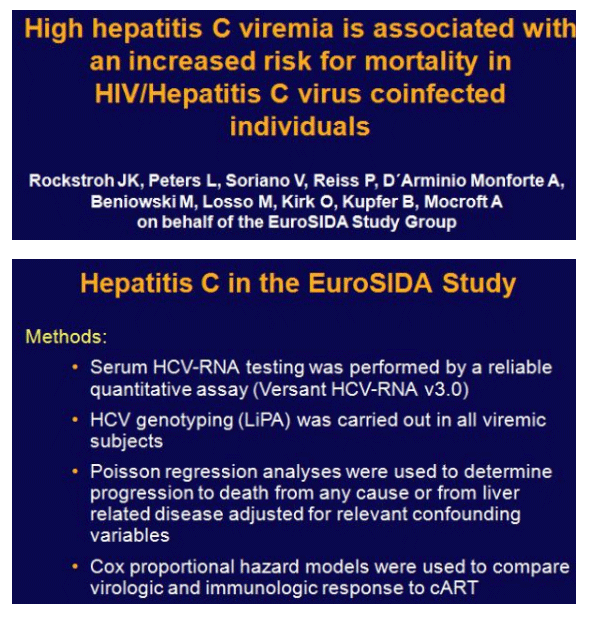
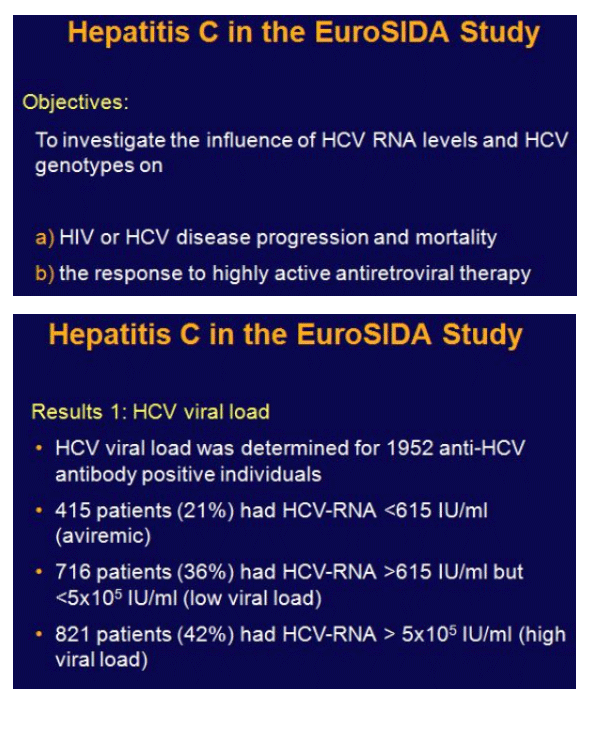
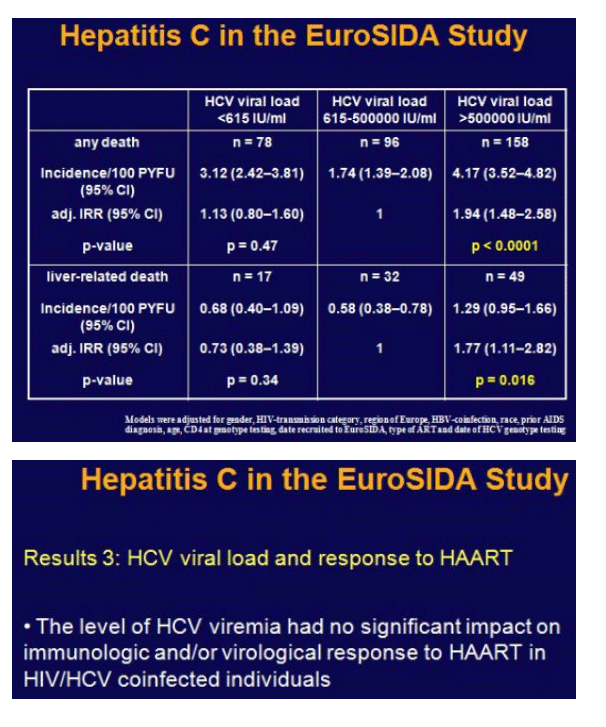
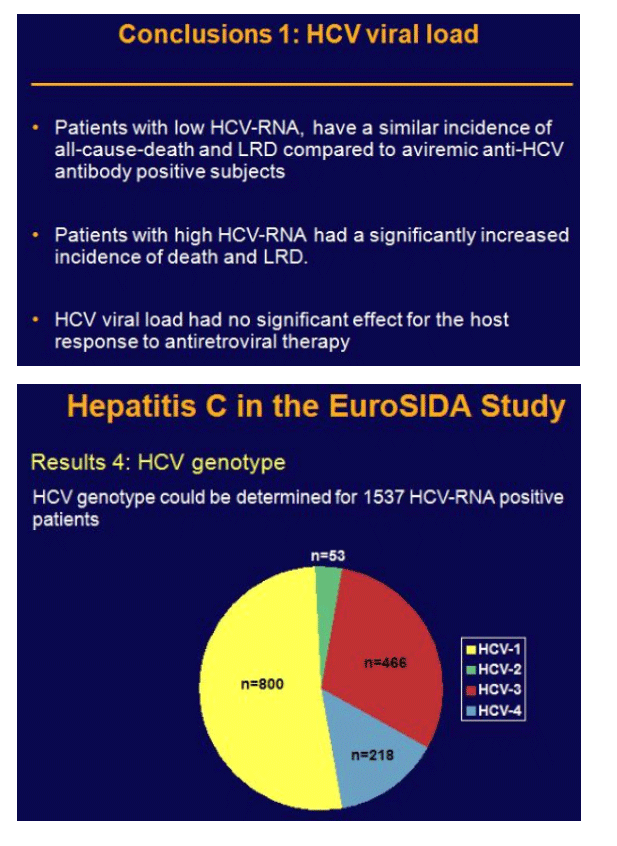
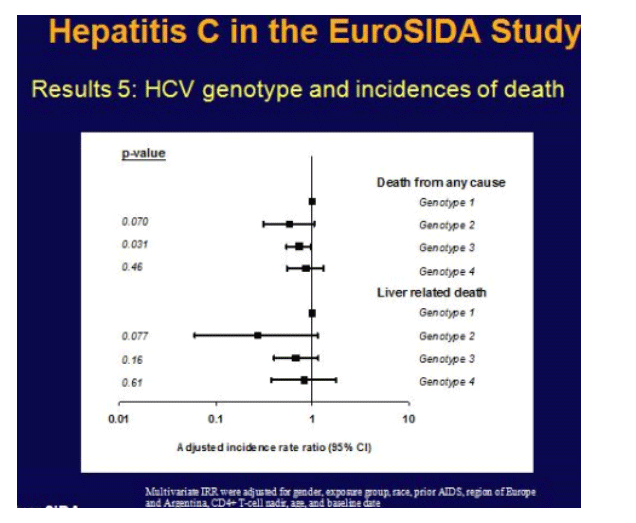
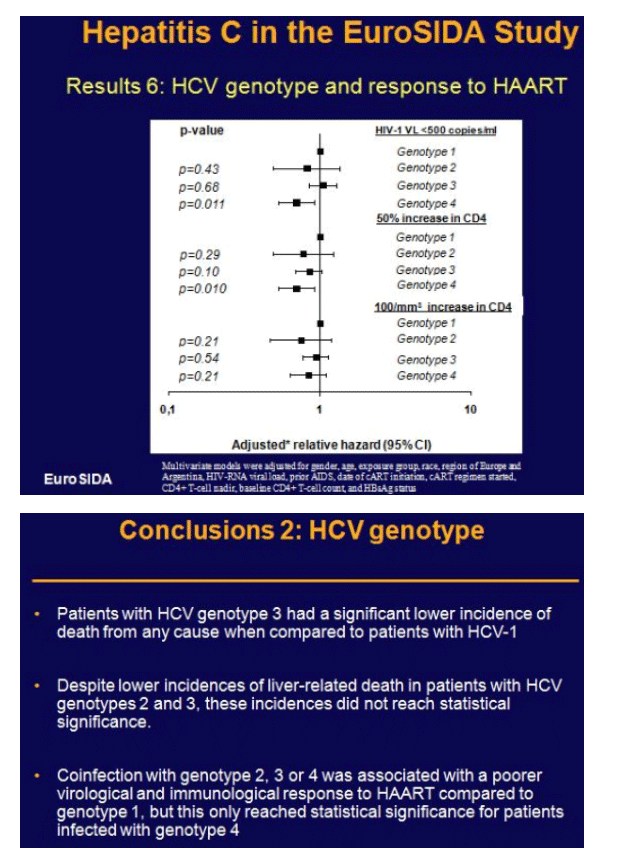
|
| |
|
 |
 |
|
|